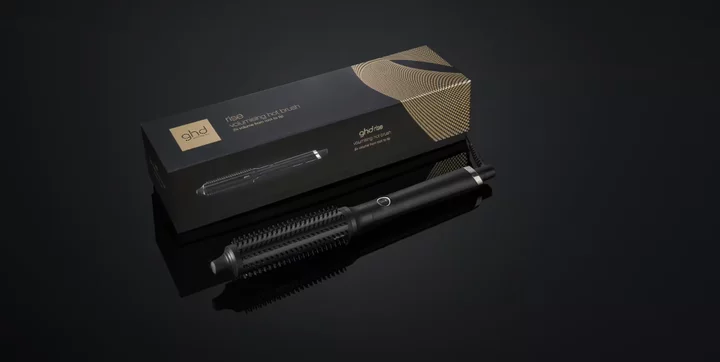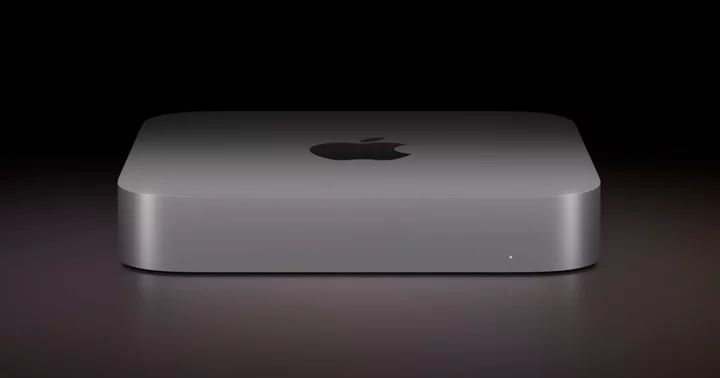The evolution of laptops has always been driven by the push for thinner, lighter, and more power-efficient designs, and whatever the year, these demands coalesce into the perfect expressions of leading-edge laptop design: ultraportables.
What exactly defines this category? In general, ultraportables weigh three pounds or less, have screens that are 14 inches or smaller, and contain enough battery life to survive a workday unplugged. These systems are now among the fastest laptops ever, are well suited to travel, and come with a variety of features and display resolutions wide enough to fit anyone's needs. You may have seen laptops of this breed referred to over the years as "ultrabooks" or "streambooks," but those were primarily attempts to attach some branding to the same basic template of "ultralight laptop."
The design always comes back to the same foundational elements: thin, light, and long-running. Here are our top ultraportable laptop picks for 2023, with buying advice following below.
Though ultraportable laptops as a class may look sleek, quite a few key differentiators distinguish models from one another. The first to consider is price. You'll see a huge difference between a system that costs $400 and one that costs $1,300, even if they boast the same brand name and similar looks and features.
At the low end are entry-level systems that generally run $500 or less. For many casual users, this is the only price range worth looking at, but keep certain caveats in mind. The processing power, display resolution, and storage capacities are usually lower on inexpensive ultraportables, and the construction can be on the flimsy side. The weight for these models also ranges up to four pounds.
Entry-level ultraportables make solid systems for younger family members to use for homework or watching movies around the house, since they are both highly portable and relatively inexpensive. Value is a big factor in this category, as plenty of budget ultraportables can entice you with a low price. If you're not careful, you may find yourself let down by a system that's a bargain only because its manufacturer cut too many corners.
(Credit: Molly Flores)That said, the spec floor has risen in this category. As faster base parts become less expensive and more common, cheaper systems with decent build quality have become more capable. Your average $500 laptop has become quite adequate for simple tasks such as web browsing, word processing, and media viewing on the go.
Midrange systems are better, but by definition they also cost more, ranging from about $500 to $1,250. Materials and specs that were once exclusive to high-end ultraportables are now the norms in midrange systems, including features such as full HD (1,920-by-1,080-pixel) or even QHD (2,560-by-1,440-pixel) resolutions, touch displays, and metal chassis. Battery life and storage have improved, as well, making it easier to get better bang for your buck in this price range. You'll still have to compromise in one or two areas (such as storage capacity, port options, and resolution) compared with the high-end systems, but for most shoppers, this price range represents the best mix of price and performance.
At the top of the price ladder are premium ultraportables, which we categorize as anything costing $1,250 or more. With these high-end systems come choice materials, cutting-edge components and features, and top performance that will speed up photo editing and other productivity tasks. Here, you'll also see 3K- or 4K-resolution displays, quality sound hardware (often from familiar brands like Bang & Olufsen), spacious and speedy storage, and other exciting features, all while the system's form factor remains slim and compact.
Many premium business laptops also fall into this class, due to specialized remote management and corporate features. This pricing tier yields the best overall user experience, the most features and port options, and the fastest internal hardware, but not every premium system is created equal. And when you're spending this much money, do you really want second best? If you have the budget and will be spending a lot of time on your laptop, it may very well pay to invest in quality.
Which Processor Should I Get in an Ultraportable?
For smooth performance and a good user experience, you'll want to be choosy about your processor. Even in a less-expensive system, the average processor is more capable than ever of handling routine tasks, but if you need speed, select carefully. At the top of the heap are Intel's Core i5 and Core i7 processors, which can be found in midrange and premium models. Most ultraportables from early 2020 use Intel's 10th Generation Core CPUs, while the releases in late 2020 moved to Intel's new "Tiger Lake" 11th Generation Core processors. In 2022, we saw the release of Intel's 12th Generation "Alder Lake" chips, which dominated that year of ultraportables. You'll recognize these as having a "12" prefix in the chip model number after its Core designation, for example the Intel Core i7-1280P or Core i7-1265U.
In 2023, we're deep in the wave of 13th Gen "Raptor Lake" CPUs in laptops; the highest-end H and HX models are already available in the largest and most powerful notebooks. Chips more fitting for ultraportables, from Intel's U series, are starting to hit shelves now.
That distinction is important. The processors in ultraportables are usually less-powerful versions of the full-fledged chips, designed for lean laptop builds. How this is portrayed has changed between generations, making things more complicated. You'll see suffixes with "G" for older Tiger Lake chips, which are increasingly less relevant; for Alder Lake and Raptor Lake chips, the distinctions that matter for ultraportables are 28-watt (W) "P" series and 15W or 9W "U" series processors.
The P series designation is new; these are chips meant for premium power machines, while the U series is destined for traditional ultraportables, with the lowest-wattage chips meant for tablets and foldables. The more powerful "H" and "HX" series chips are rarely used in ultraportables, reserved for larger systems and gaming laptops. Most laptops pair these chips with 16GB of memory, though budget-friendlier models will stick with 8GB.
(Credit: Molly Flores)Aside from Intel's near-ubiquitous CPUs, you will see some systems featuring processors from other manufacturers, primarily AMD and, rarely, Qualcomm. AMD chips support the same range of uses as Intel chips, and the strength of AMD's Ryzen 5000 and Ryzen 6000 processors made them fairly popular in ultraportables in 2022. Likewise, we're at the top of another wave of laptops in 2023 with Ryzen 7000 mobile chips, which will again change the calculus in your decision, but stay tuned for full reviews. We tested the first 2023 Ryzen 7000 mobile chip, the AMD Ryzen 9 7945HX, and the initial results are promising, but this grade of chip is for bigger machines; lower-power Ryzen 7000 CPUs for ultraportables are forthcoming.
If you aren't sure how to judge the chip used in the system you're considering, take a look at our reviews (particularly the results of our benchmark tests) to see how it will fare in real-world conditions. Like Intel's Core line, AMD's Ryzen chips now come in U-series designs (for ultraportables) and H-series ones (for thicker, more powerful laptops). We have a deeper explainer on laptop processors here if you want to dive into the real nitty-gritty.
Finally, at the low end are Intel's Pentium and Celeron processors. These budget processors are inexpensive and energy-efficient, but they're often paired with lesser RAM allotments (as low as 4GB). Power users may find themselves frustrated by slow performance. You can probably make do if you're a casual user and not multitasking much. Still, consider one of these only in the very cheapest laptops.
None of this applies to Apple laptops. Apple started a shift away from Intel hardware in 2020, moving in stages to its own processor designs for the entire MacBook line. The very latest MacBook Air and 13-inch MacBook Pro are using the M2 processor, the second generation of Apple's homegrown CPUs. In our reviews of these systems and the older 14-inch MacBook Pro (from late 2021), we found the M1 and M2 in their various forms to be quite impressive.
(Credit: Molly Flores)Plus, with the M2 Pro and M2 Max now in the wild, Apple now uses its own processors in all of its laptops. That makes it less of a factor when choosing among Apple models, but if you're currently a Windows user, you will have to decide whether the M1 and M2's impressive speed (especially with specially written native software) is worth making the switch to macOS.
Which Graphics Processor (GPU) Should I Get in an Ultraportable?
Also important: the graphics processor, also known as the GPU. Almost all ultraportables rely on integrated graphics, and for any Intel chip up through the 10th Generation, that comes in the form of Intel UHD Graphics. This is graphics-acceleration silicon that is part of the CPU, not a dedicated chip of its own. This level of horsepower is fine for casual (often web-based) gaming or old games, streaming media, and maybe editing the odd photo, but not for substantial gaming.
However, Intel's 11th Generation/Tiger Lake began to challenge that narrative. One of its main draws is improved integrated graphics, named Iris Xe, that replaces the Intel UHD Graphics in the higher-end versions of the chips. (This holds true for the latest 13th Generation chips, too.) Though the performance does not equal that of the discrete GPUs seen in gaming laptops, it's much improved over past Intel solutions, and competitive with AMD's integrated solutions.
(Credit: Molly Flores)This means non-gaming laptops with 11th or 12th Gen CPUs are generally capable of running big-budget single-player games on low settings, and less-straining multiplayer titles, opening up gaming to a wider audience. Performance does vary based on each Tiger or Alder Lake chip, so the higher chips in the hierarchy are better for gaming, but the passive performance of each is evident. You can see more specific Iris Xe performance numbers in our Xe testing piece.
Additionally, Apple's M1 and M2 chips are in the same boat for graphics processing: Up to 10 of their cores are dedicated to graphics in the basic M1 and M2 chips, resulting in similar numbers to Iris Xe in our testing.
In addition, we tested a range of integrated-graphics laptops to see just how capable they are for gaming. The short version is that newer AMD solutions and Iris Xe laptops are surprisingly capable in certain genres and lower settings, while anything older really struggles. You can read that deep-dive testing analysis here.
(Credit: Kyle Cobian)If you want to do more with media and play games at higher settings and frame rates, you'll need a discrete graphics chip, like the mobile versions of Nvidia's GTX and RTX graphics cards. These GPUs require more power and cooling, and as such are generally only seen in gaming laptops or bulkier desktop-replacement notebooks. By and large, they're usually not found in ultraportables. One uncommon exception is the aforementioned LG Gram Pro 17, which houses an RTX 3050 GPU.
You'll find an increasing number of exceptions that are both portable and game-ready, like the 2022 Asus ROG Zephyrus G14, but by and large, the most travel-friendly systems are not suited to gaming. Don't expect the integrated graphics to suffice for playing much more than a few less-demanding games on lower-detail settings.
How Much Storage Should I Get in an Ultraportable?
Speedy hardware is all well and good, but you also need somewhere to keep all your digital stuff. For almost all ultraportables now, this means a solid-state drive (SSD). These compact, flash-based storage devices are weight savers and immune to data loss from shock or bumps because they don't have any moving parts, which is ideal for systems doing a lot of traveling.
Increasingly, SSDs use a form factor called M.2, which is smaller than your traditional 2.5-inch SATA drive—and smaller connectors allow smaller designs, which makes them a perfect fit for an ultraportable. Now, most such M.2-connected drives use a PCI Express (PCIe) bus connection for faster data transfer, and thus faster overall performance. Some very thin ultraportable designs bypass M.2 implementations altogether, though, and solder the storage directly to the motherboard for even greater space efficiencies. (You can't upgrade those. What you buy is what you're stuck with.)
(Credit: Molly Flores)A 256GB capacity for SSD storage is very common on midrange and high-end ultraportables. It would be nice to have a bit more room than that, but boosting SSD capacity still tends to be pricey, so the cost can jump if you opt for a larger 512GB or 1TB option if the manufacturer offers it. A 256GB drive will do the job for many users, though, especially since you likely won't be storing large game installations or media projects on this type of computer.
While SSDs are the most common storage format for ultraportables, you will see two other storage options used on less-expensive systems. Some low-cost ultralight laptops use an embedded MultiMediaCard (eMMC), a form of solid-state storage sometimes (mis)identified as an SSD in product specs but actually flash memory like the kind used on memory cards. As such, it's slower and a lot smaller in capacity (32GB to 128GB) than a standard SSD. You'll generally find this type of storage only on the very cheapest Windows laptops and in many Chromebooks.
Finally, a (very) few budget-minded systems still use good, old-fashioned spinning hard drives, though the presence of one as the boot drive signals an older or remaindered model at this point. These drives are less expensive than SSDs, and they offer substantially more room for your files for the money—you will often see hard drives with capacities of 500GB or more. You won't get the same speedy performance as you do with an SSD, but lots of storage space is a plus. Given ever-thinner designs, however, most makers of ultraportables have phased out bulky hard drives altogether at this point.
What Is the Best Kind of Display in an Ultraportable?
Let's go from what's inside a typical ultraportable to the most visible aspect of the exterior: the screen.
Ultraportables' displays come in an increasingly varied array of resolutions, from now-humdrum 720p (1,366 by 768 pixels) in the very cheapest budget models, to full HD (1,920 by 1,080 pixels) as the mainstream norm, to Ultra HD or 4K (3,840 by 2,160 pixels), with a few nonstandard resolutions peppered between full HD and UHD.
Lower-resolution screens are most frequently found in entry-level systems simply because they're the least-expensive option. They work well enough for reading and typing text, and YouTube often defaults to something lower than full HD, anyway, so less discerning users can get by just fine. But a 1,366-by-768-pixel screen is best avoided in a new laptop with a screen 13 inches or larger, if you can help it.
Full HD (often referred to as 1080p) screens are what you should expect on many budget systems, all midrange models, and some premium ultraportables. The 1080p display is becoming standard enough that even some cheaper options now offer them, a far cry from the situation just a few years ago when a much grainier 1,366 by 768 was the norm. These displays offer support for full-1080p video playback and are better equipped for multitasking since you can fit more readable text and two side-by-side windows onto a 13- or 14-inch 1080p screen. This is a sharp, true full-HD resolution, ideal for most daily use.
(Credit: Kyle Cobian)Ultra HD is currently the resolution of choice for the highest-end ultraportables and models for content-creation pros. As 4K screens have four times the resolution of a full HD display, you can fit a lot onto them. The sheer number of pixels requires more power, however, and 4K-equipped systems usually see a significant drop in battery life compared with similar full HD systems. You also have the question of content. Although 4K TVs and displays are becoming increasingly common, 4K content streaming is far from universal (this is slowly improving on some streaming services), and gaming in 4K is definitely way more than any ultraportable can support. At present, these displays are best suited to uses like photo and video editing, but they do look stunning.
Some premium laptops now use QHD or QHD+ screens, which are resolutions that fall between 1080p and 4K. They represent a nice middle ground between expensive, power-draining 4K resolutions and sharp, better-than-HD picture quality, so you should be happy to see QHD or QHD+ on a laptop you're considering buying. In addition, an increasing number of light-laptop makers have moved their ultraportable models to screens with squarer aspect ratios, such as 16:10 or 3:2, away from the much more common 16:9. That's a trend we saw ramping up a couple of years ago, and it's continuing. Additionally, brilliant OLED display technology is making its way into some of our favorite laptop lines.
The other feature to watch for is support for touch input. While touch-capable displays were uncommon just a few years ago, they're now much more of a thing in ultraportables, even in the entry-level and business-laptop categories. Touch technology is useful on a bus or train where you may not have elbow room to use a mouse or touchpad, making it a good match for ultraportables. Even if you don't regularly use touch in your day-to-day computing and don't plan to incorporate it, it may be worth having just so you don't regret the decision not to get it down the road.
Should Your Next Ultraportable Be a 2-in-1?
More and more ultraportables are being released as what we call "convertible hybrids," or 2-in-1s. Some 2-in-1s rotate around the hinge, while others have a separate keyboard base that detaches from the screen. In the former case, these mash-up machines let you enjoy both laptop and tablet functionality, thanks to hinges and swiveling joints that let you bend the display back around to use without a keyboard. More and more manufacturers are adopting the rotating non-detachable design.
(Credit: Molly Flores)Rotating-hinge convertible devices are laptops first, but they aren't limited to traditional clamshell designs. Because they feature specialized hinges and touch screens, you can also prop them up like a tent, or turn the keyboard facedown so the screen is better positioned for watching a movie or giving a presentation. While convertibles are a category in their own right, the ability to shape-shift naturally lends itself to making a good travel laptop, so you'll see that some of our highest-rated ultraportable laptops are convertibles, too. (See our guide to the best 2-in-1 convertible laptops and detachables.)
Should You Consider a Lightweight Chromebook?
Depending on what you do with your computer, you might find a Chromebook to be one of the best values in ultraportables. A Chromebook is a bare-bones laptop that runs Google's ChromeOS. It limits you to using web apps and, as of models released in the last couple of years, Android apps. (If you need Android apps, double-check that the Chromebook model you're considering supports them, though practically all new ones now do.)
(Credit: Molly Flores)Running ChromeOS means that you won't have access to traditional Windows software, so if that's central to how you work and play, a Chromebook isn't for you. But if you use a web-based email client such as Gmail or Outlook for communications, rely on Google Drive for doing your work, and spend most of your time watching videos on YouTube or playing web games, and you don't expect your needs to change, chances are you'll get along just fine with a Chromebook. And considering that computers of this type can be extraordinarily affordable (most cost $500 or less), you could outfit your family with several Chromebooks for the cost of one high-end Windows ultraportable.
So, What Is the Best Ultraportable Laptop to Buy?
With ultraportables available now that are thinner, lighter, and more powerful than ever, you'll find something in this vibrant class of laptops to suit your usage habits and travel needs. Below is a detailed spec breakout of the top ultraportables we've tested. We refresh the list constantly to include the newest products, but because of the large number of laptops we review every year, not every top-rated product makes the cut. Rest assured, though: These are all winners in their own ways.









